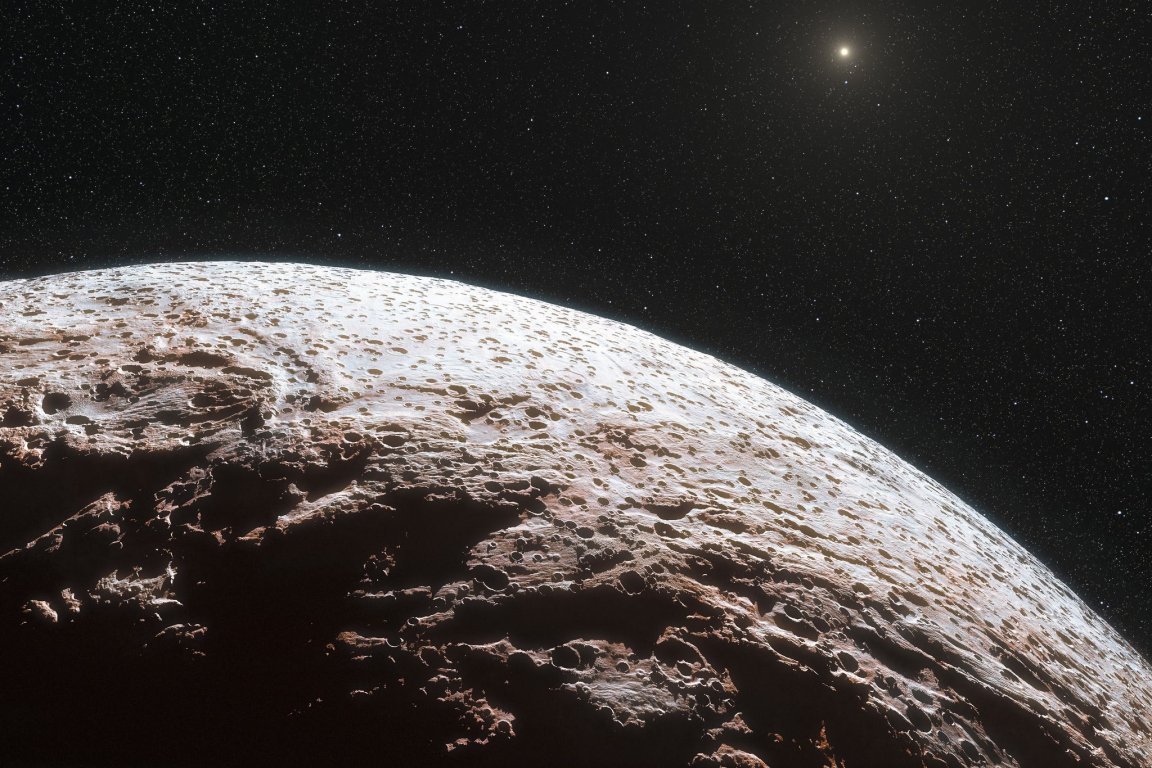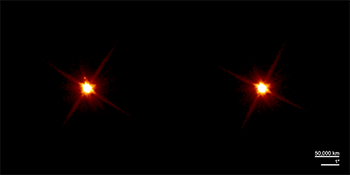
New Discoveries
While scientists continue to make new discoveries about our ninth planet, Pluto, relatively less is known about other dwarf planets. A team from Southwest Research Institute (SwRI) are looking to change that. The team has discovered a dark moon orbiting previously-moonless dwarf planet. Makemake is one of the “big four” dwarf planets populating the Kuiper Belt region at the edge of our solar system.

Detailed in a paper published in Astrophysical Journal Letters, the team used data from Hubble’s Wide Field Camera 3 and spotted a faint point of light near the dwarf planet . From there the team discovered the natural satellite, which they dubbed MK2. The moon had a dark surface and is 1,300 times fainter than Makemake.
Up until now, MK2 was hidden by “a nearly edge-on orbital configuration.” In other words, the moon was difficult to see through the glare of the planet. The discovery of MK2 means that all four of the currently designated dwarf planets have at least one satellite. The discovery could point to the possibility of other large Kuiper Belt Objects (KBOs) being host to hidden moons. “Makemake’s moon proves that there are still wild things waiting to be discovered, even in places people have already looked,” said Dr. Alex Parker, lead author of the paper, in a statement.
One Discovery Leads to Others

The previous lack of knowledge of Makemake’s satellite suggested that it had escaped a past giant impact. Now, astronomers are looking to study whether MK2 is the result of a giant collision, or if it was captured by the planet’s gravity.
A satellite orbiting Makemake is a key discovery in helping to learn more about the dwarf planet itself. “With a moon, we can calculate Makemake’s mass and density,” Parker said. “We can contrast the orbits and properties of the parent dwarf and its moon, to understand the origin and history of the system. We can compare Makemake and its moon to other systems, and broaden our understanding of the processes that shaped the evolution of our solar system.”